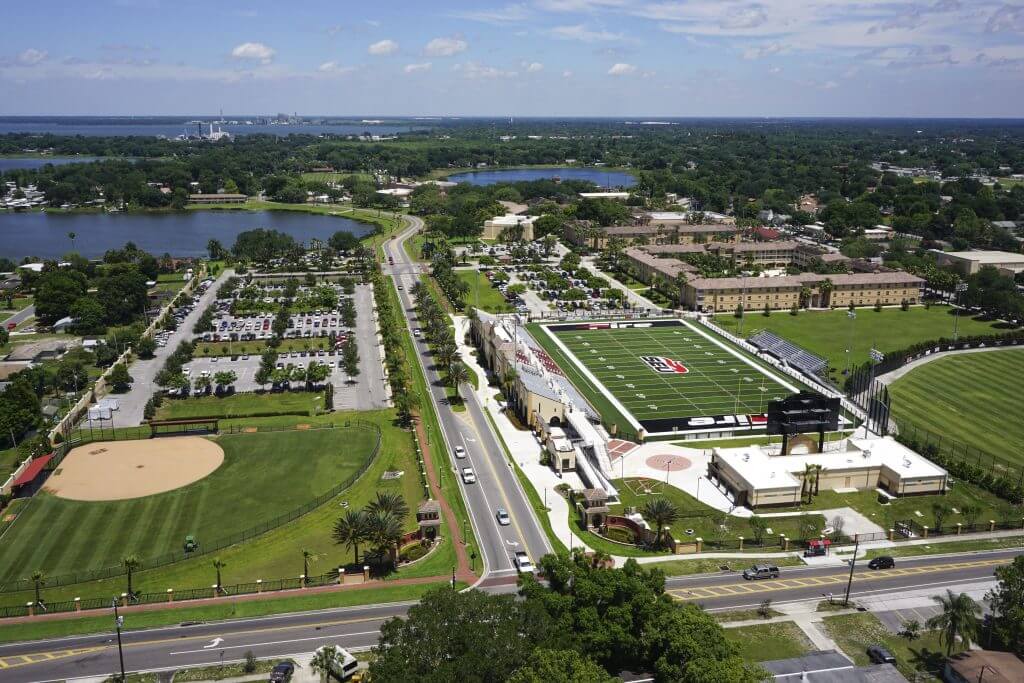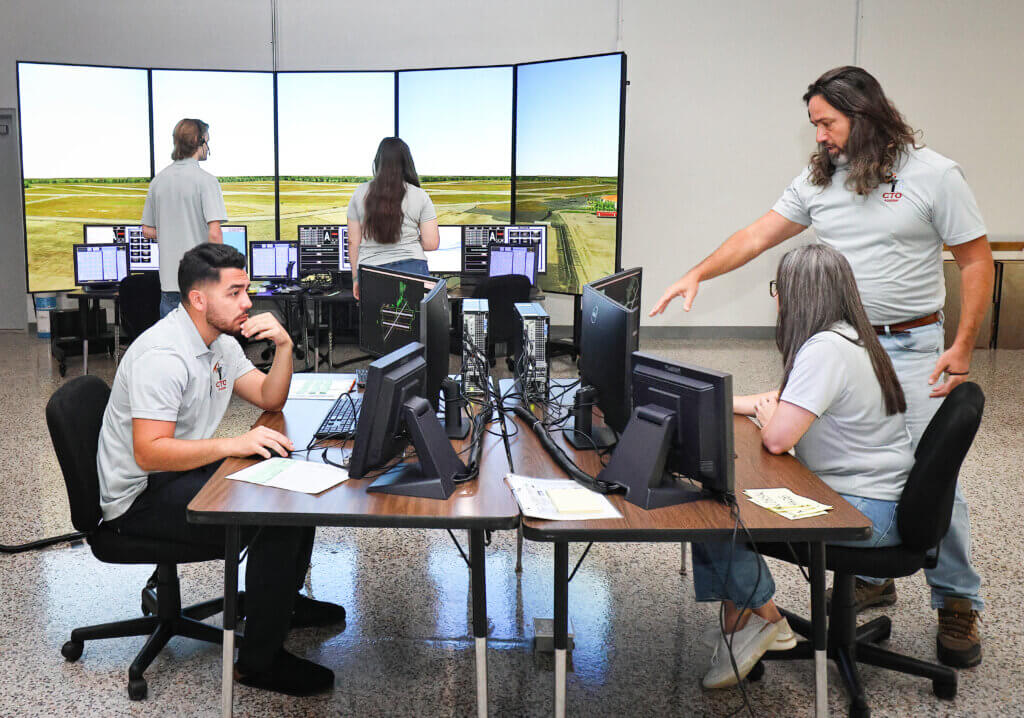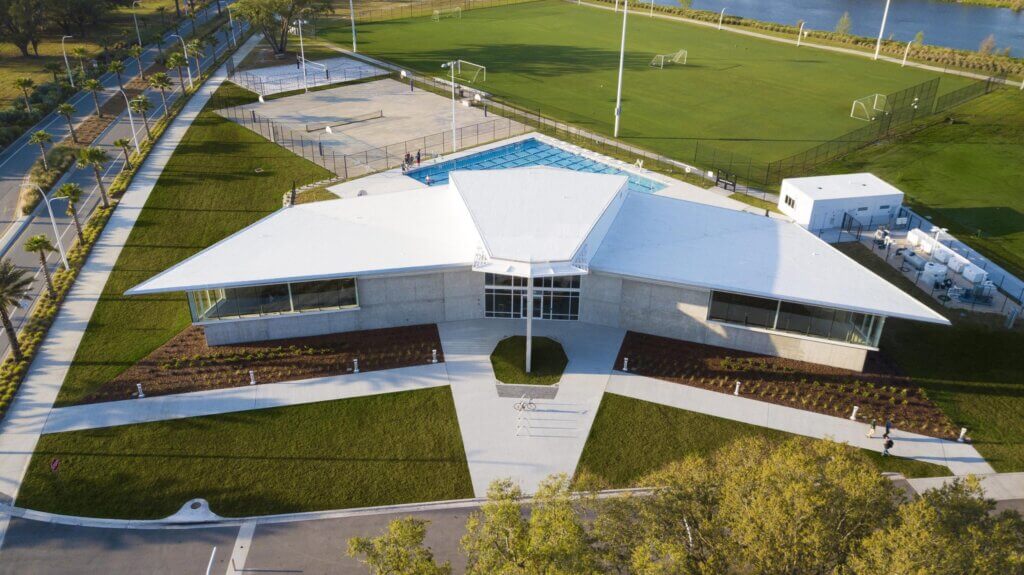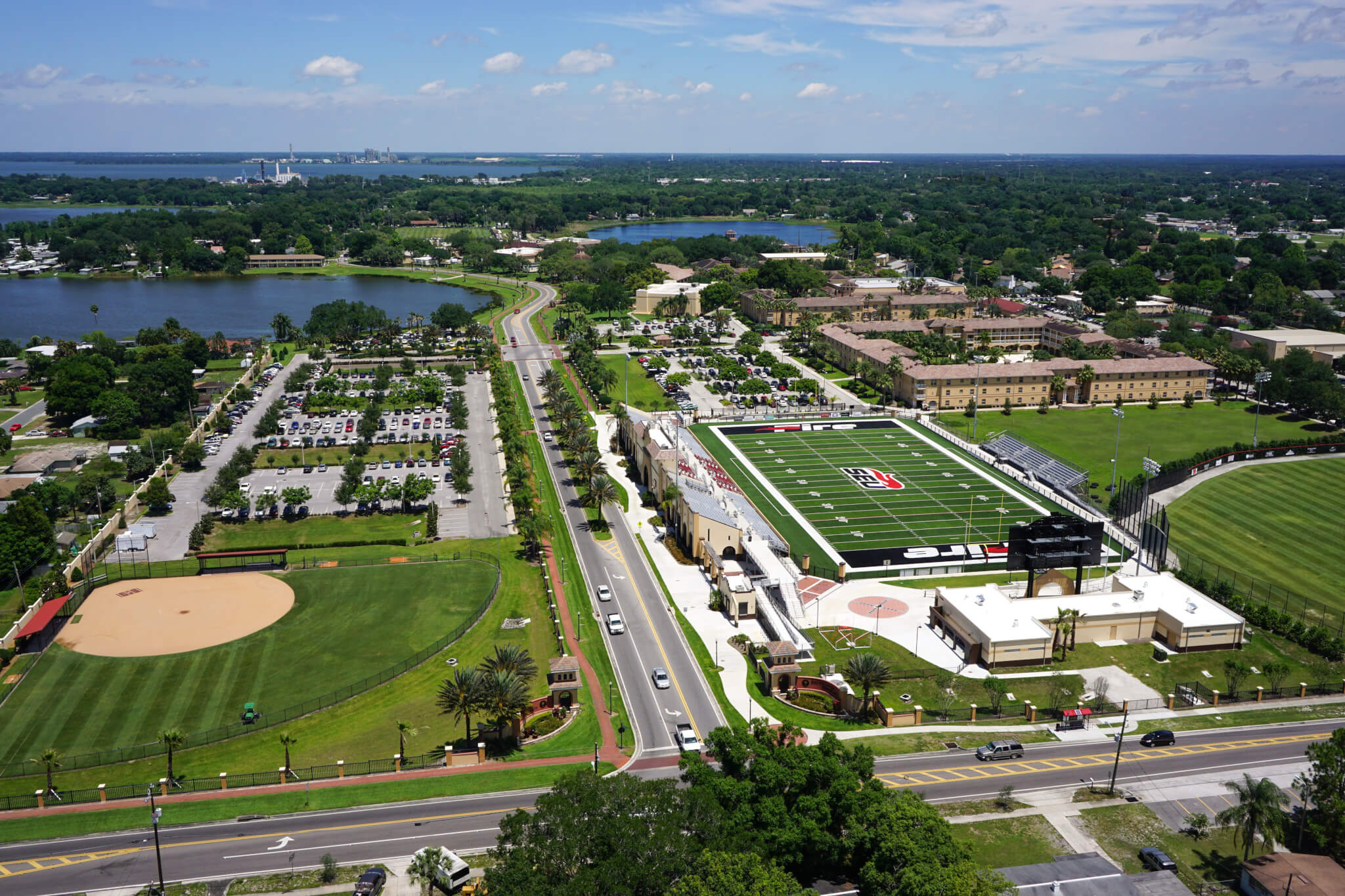Investment Fuels Growth at Southeastern University
Nestled among 88 acres just east of U.S. 98 South in Lakeland, Southeastern University continues to grow in every way — students, faculty, buildings, even sports. And that excites its 15th president, Dr. Kent Ingle.
“SEU is becoming a nationally recognized educational institution. We have been listed by The Chronicle of Higher Education as one of the nation’s fastest-growing private master’s institutions,” Ingle says. “From our enrollment increase of over 95 percent in the last 10 years, to our legislative efforts and our 110-plus extension campuses around the country with thousands of students enrolled, we’re focused on developing the platform of Southeastern University into a nationally recognized brand.”
When it opened its doors at its current location at 1000 Longfellow Blvd., the college was home to four buildings, 13 faculty members and 141 students from 18 states, Cuba, the Bahamas and the Philippines. Today’s numbers speak to Ingle’s comments on growth: 175 faculty members, nearly 8,000 students and more than 25 buildings.
The Christ-centered university’s scope reaches far beyond Polk County and Central Florida. SEU offers 112 extension sites in 32 states, including 23 in Florida. It also has two international partnership locations in East Africa.
From Orange Groves to Beautiful Campus
Southeastern University didn’t actually start at its current site. In fact, it wasn’t even founded in Florida. The school got its start as the Alabama Shield of Faith Institute in New Brockton, Ala., in 1935, where it had four faculty members teaching 22 students in one building. Back then, it offered courses in Bible study and practical training.
From Alabama it moved to Atlanta, Ga., from 1940 until 1946, before heading south and relocating at Lodwick School of Aeronautics (now Joker Marchant Stadium) in 1946. Six years later it moved to its current site.
“At our Lakeland campus, we provide state-of-the-art facilities for our students, from campus dining to dorm rooms,” Ingle says. “We are continuing to grow our Central Florida footprint through constructing a new Welcome Center, which will be a one-stop shop for all of our student services. This will enable us to provide unparalleled customer service as we work to meet every single one of our students’ needs.”
The college offers more than 80 associate’s, bachelor’s, master’s and doctoral degrees in six colleges, said Dana Davis, SEU’s chief communications officer.
In the beginning, “We offered three years of Bible and theology training in ministerial training, missionary preparation, and religious education. We did have a joint degree with Florida Southern College for students who wanted to complete the rest of their gen-ed with FSC.”
Sarah Breed relishes her time at SEU.
“In high school, there was a brief moment when I considered moving out of state for college. However, I am so happy I chose to stay in Polk County and attend Southeastern University. For me, this wasn’t a second-best decision. Southeastern offered me a well-rounded education and prepared me for my future career,” says Breed, now the director of initiatives at the Lakeland Chamber of Commerce.
Using connections she made at SEU, she accepted a job to live abroad, where she taught literature to high school students. When she returned to Lakeland, she started looking for a new job.
“The college’s reputation of graduating respectable young men and women gave me an advantage as I applied for jobs locally,” Breed says. “I enjoyed my time at SEU so much that I have continued to stay in touch with faculty and staff, and I recently returned as a graduate student to further my education.”
Community Life In Polk County And Beyond
The university goes beyond working with students. It also prides itself in working with local organizations to prepare students today for the jobs of today and tomorrow.
“We value listening to the needs of our community and because of that, we’re committed to providing need-oriented education. Through this practice, we opened up new programs in fields that are hungry for employees,” Ingle says. “We recently began a nursing program that already has had many nurses hired in the field of medicine.”
To assist in training nurses and provide science classes, the 27,000-square-foot College of Natural & Health Sciences was built, complete with labs, nursing simulation rooms and an auditorium. “We look to fill market niches while at the same time honoring our commitment to being accessible and affordable,” he says. “We want to make a big impact in Lakeland, Polk County, and Central Florida as a whole.”
The College of Arts & Media, the College of Behavioral and Social Sciences, and the Jannetides College of Business & Entrepreneurial Leadership found new homes in the $22 million four-story Buena Vida buildings that include classrooms, rehearsal halls, equipment storage, a food court and new dorm rooms in 125,000 square feet.
Next up is the Welcome Center, which is expected to open in the fall of 2019 next to the Addison Building, which will be renovated as part of the project. The Welcome Center will house administrative, enrollment and advancement offices, giving students one place to visit for all their essential needs.
In addition to academics, SEU prepares its students to be servant leaders. Last year, SEU students provided about 100,000 of community service hours to various organizations in Central Florida, Ingle says. “It’s essential for our students to be actively involved in Polk County.”
Let’s Not Forget Sports
Having well-rounded students is important to the administration as well.
“We noticed that Lakeland lacked a college football program, and so five years ago we launched a football program that has now already won three conference titles,” Ingle says. And, “We have also expanded our athletic teams and are in the midst of building an eight-lane NCAA track for our new track-and-field field program.”
The university opened its 3,500-seat football stadium and introduced the first Fire football team in 2014. It is currently building the $1 million track-and-field facility.
It offers 10 men’s sports, including wrestling and baseball, and eight women’s sports, including soccer and golf. So far in 2018 it has had six teams and 10 individuals representing the university as NAIA National Tournament Qualifiers., and its men’s basketball team won the Sun Conference championship.
Not Resting On Their Growth Laurels
President Ingle is proud of what the university has accomplished in his seven years there.
“Honestly, I am grateful to be a part of something so extraordinary,” he says. “Our story of growth and expansion is not the normal story you hear in higher education. It has taken the hard work and diligence of so many people to get where we are today. As a faith-based institution, we feel a deep sense of stewardship when we think about the incredible success we’ve experienced as a university.”
He also wants to keep the university moving forward. Right now, the university lacks parking spaces; building parking garages has been discussed, among other things.
“With our gratitude comes the resolve to continue pressing on to the next level. We know that we have only begun to scratch the surface of the potential of this organization. We always believe that our best days are ahead for SEU, not behind, and even in the midst of our success, we aren’t afraid to make ourselves uncomfortable in order to ensure that we are positioned for continued growth.”
Growth means more than bricks and mortar, and Ingle and his team try to be creative in meeting the needs of others, whether it’s giving artists space to showcase their work on campus or offering overseas mission trips.
“What we’ve found is that when you meet someone’s need, they will do all of the marketing for you,” Ingle says. “Rather than only marketing our school to students, we come alongside other non-profits and even businesses to provide education stewardship to their endeavors. Students are everywhere, and we believe that rather than trying to convince them to come to us, we need to be going to them. Creativity, innovation, and need-oriented programs are ways that we can take education to the streets. We’re constantly looking for new ways to deliver education that is affordable and accessible. That’s always been among our top priorities.”

Related Posts



